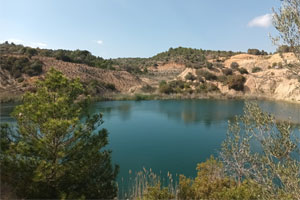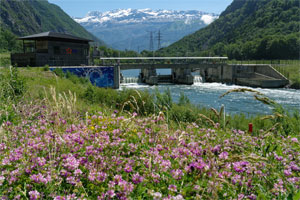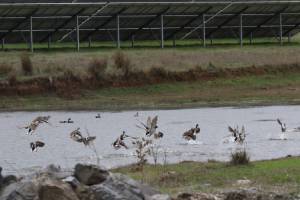CEMEX Spain
CEMEX Spain, in collaboration with the University of Barcelona and with partial funding from the EU LIFE program, successfully transformed the Pastor clay quarry in Spain into a nature restoration showcase. By reshaping hard clay terraces to resemble the natural landscape, the project retained water on-site, improved water quality off-site, and mitigated soil degradation caused by droughts. The resulting wetland created numerous biodiversity benefits, benefiting various plant and wildlife species, including protected birds. Notably, this restoration work seamlessly coexisted with ongoing quarrying operations, showcasing a progressive approach with no negative economic or operational impact. The project sets a valuable example for the compatibility of land-transforming activities with ecosystem.
EDF
EDF's ambitious river restoration project at the Romanche-Gavet facility in France serves as a remarkable example of a company surpassing regulatory obligations by revitalizing riverbanks with indigenous plant species and enhancing river connectivity for fish. This initiative, funded by EDF and the Rhône Mediterranean Corsica Water Agency, involves the replacement of six power plants and five dams with a modern, environmentally friendly facility. EDF's commitment goes beyond legal requirements, as they've incorporated a 60-meter fish pass in the new dam and partnered with organizations like the National Forest Office and the National Alpine Botanical Conservatory to restore river stretches with local plants. This project not only demonstrates positive biodiversity outcomes but also aligns with the proposed EU Nature Restoration Law's goals, emphasizing EDF's dedication to environmental stewardship alongside its core business operations.
Iberdrola
Iberdrola, a prominent electric utility company, executed a noteworthy ecological restoration initiative at the Nuñez de Balboa Photovoltaic Plant in Spain. This project aimed to positively impact biodiversity by conserving endemic flora, providing habitat connectivity for local fauna, and fostering social and economic benefits through ecosystem services promotion. With around 1000 hectares of land, including 400 hectares occupied by photovoltaic infrastructures, the restoration included creating a 7-hectare genetic reserve of endemic flora, restoring riparian vegetation, planting tree and shrub mosaics across 1.5 hectares for fauna shelter, and implementing sustainable land stewardship agreements. Notably, sheep were employed for vegetation control instead of herbicides, native aromatic species improved pollinators, and "ecological solar honey" was produced from on-site beehives. Monitoring programs indicated that the plant already outperforms surrounding areas in terms of biodiversity richness and population numbers.







